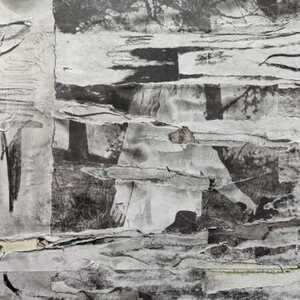Three Wise Men
by Shelton Hull
Duke Ellington
Duke Ellington Presents (DK 37470)
Charles Mingus
East Coasting (DK 37645)
John Coltrane
The Bethlehem Years (D2K 37986)
Shout! Factory
Bethlehem Jazz is a great name for a record company. From 1953-1960 it gave exposure to many fine jazz musicians, typically on the upward swing of their careers. The most notable examples might be Roland Kirk and Nina Simone, whose styles were codified on Bethlehem tracks before larger success came on other labels. Good for them, but not so much for Bethlehem, and thus the easiest way to buy the label’s output has been through the box sets of Mosaic Records. Shout! Factory is reissuing seven of their albums in 2005, and the first three bode well for the rest.
Duke Ellington, John Coltrane and Charles Mingus are all better-known for their associations with other labels like Atlantic, Columbia and Impulse, but from 1956-57 they all did sessions for Bethlehem. Mingus, then 35, and Coltrane, 30, were just hitting the next level with their work. Mingus was known for working for Red Norvo, Lionel Hampton and Bud Powell; he’d also co-founded Debut Records with Max Roach. Coltrane had been with Miles Davis since 1955 and had just finished a monumental run at the Five Spot that summer with Thelonious Monk, Wilbur Ware and Roy Haynes. (Coltrane was, well, instrumental in illustrating the potential of Monk’s music for improvisation, but he got the bug from Miles, who recommended him to Monk.)
It was winter in New York, but springtime for John Coltrane. The strictures of ensemble playing were of no care; after the time spent in small groups, this may have even been refreshing to his restless mind. Here he fronts bands of five, nine and 15 members, including luminaries like Art Blakey, Donald Byrd, Al Cohn, Freddie Green, Philly Joe Jones, Melba Liston, Oscar Pettiford, Sahib Shihab and Idrees Sulieman. (You don’t hear names like that in music anymore!) It’s a fun set of 13 tunes that, though not necessarily obscure, were not much-used past that phase of history.
The entire second disc consists of alternate takes – a nice bonus, especially since Coltrane would only do one more large-group session in his life: the radically different “Ascension” in 1965. The heads are solid and the soloists excel in the format. If I had to be equivocal about it, I’d say disc one of this album tops the whole batch of CDs – which means a lot because Trane alone was in a new and unfamiliar setting.
Charles Mingus was soon to enter a run with Atlantic Records, making albums like Blues and Roots and Mingus Ah Um, and East Coasting foreshadows his later power moves. This was his “Jazz Workshop” period of practice and pedagogy. Two of his essential personnel were already on hand: Jimmy Knepper, who was later assaulted by Mingus during a recording session; and drummer Dannie Richmond, his closest musical collaborator. This savvy sextet also features Bill Evans, who quickly ascended to prominence via Miles and never worked with Mingus again.
The shadow of Duke Ellington is cast throughout. Coltrane’s album leads with “Midriff,” a favorite of Ellington’s. Mingus, for his part, always acknowledged Duke – who fired him after a brawl with “Caravan” author Juan Tizol – as his hero and musical ideal. Ellington, in turn, was crucial in legitimizing Mingus’ work to the old guard of jazz critics. When Ellington wanted to record the classic “Money Jungle” album, he called for Mingus and Roach. Game recognize game.
It would be interesting to know what the Duke thought of these other albums. Coltrane and Mingus were approaching the upward arc of their careers, but Ellington was catching his second or third wind. He’d brought his band from DC to the Cotton Club in 1927; by the time it ended in 1932, he was an international star. Twenty-five years later, he’d just come off the epochal Newport show of 1956 (one of the finest live recordings you’ll ever hear), which not only reintroduced his style to the jazz public, but it reawakened his inherent genius for composition. It was a textbook example of subtle “re-branding”: over the next 17 years, he did some of his very best work.
Duke Ellington Presents… has one of the only bad pictures of the Duke I’ve ever seen, but the music is great – a mix of established tunes and arrangements of songs that, while standards, were not part of the Duke’s arsenal to that point. The high-water marks are “My Funny Valentine” (one of the few big-band versions) and “Cotton Tail,” which is taken at a blistering tempo impossible to replicate with a modern band.
This incarnation of the Ellington group included lifers like Johnny Hodges, Ray Nance, Cat Anderson and Harry Carney, and the newer blood of Quentin Jackson, Sam Woodyard, Britt Woodman and Paul Gonsalves, whose work at Newport sparked the interest of a new generation in Ellington. There’s no doubt he would have been fondly remembered, but would his work be quite as canonical without that fabulous second act? It’s hard to say, and that is a good thing.
Shout! Factory: http://www.shoutfactory.com/ ◼












